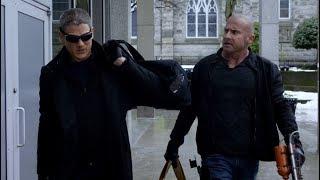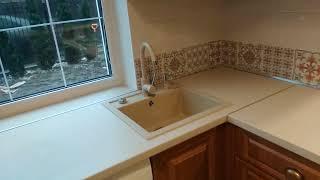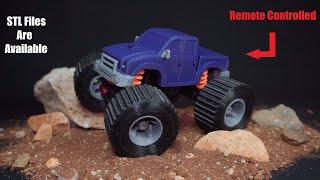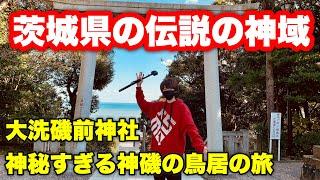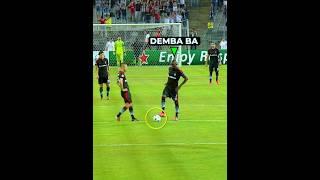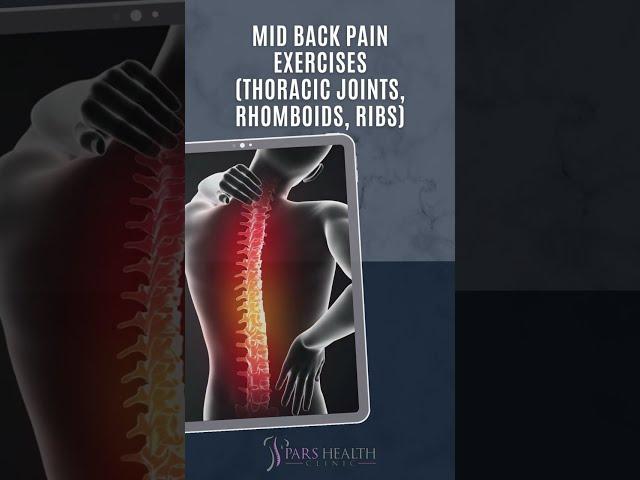
Mid Back Pain Exercises (Thoracic Joints, Rhomboids, Ribs) #shorts
Three stretches to ease the mid-back pain
To see daily videos about body health ✅SUBSCRIBE✅ to our channel:
https://www.youtube.com/c/ParsHealthTV?sub_confirmation=1
Use this link to watch the full version of this video: https://youtu.be/uBRPKSb0XyY
We'll be talking about these items in this video:
Mid Back Pain Exercises (Thoracic Joints, Rhomboids, Ribs):
- Seated twist
- Passive backbend
- Latissimus dorsi stretch
We will answer these questions in the long version of this title:
- What is mid-back pain?
- How to fix mid-back pain?
- What are the reasons for mid-back pain?
- What are the causes of mid-back pain?
- What are the best stretches for mid-back pain?
- What are the best mid-back stretches?
- What are the best exercises to strengthen core muscles?
- How to fix mid-back pain?
- How to ease mid-back pain?
- How to eliminate mid-back pain?
6- Corner Stretch
mid-back pain is usually caused by poor posture, which may be aggravated by tight chest muscles. The corner stretch is a painless and practical way to open up the chest muscles and promote healthy posture.
To do this stretch, you should face the corner of a room.
Place feet together, approximately 2 feet away from the corner.
Position a forearm on each wall with the elbows just below shoulder height.
5- Seated twist
The seated twist stretch can aid in determining how tight your mid-back muscles are while slowly expanding the range of motion in both directions.
Poses that involve prolonged sitting with hunched shoulders can lead to the mid-back muscles tightening, restricting the spine's capability to twist. An individual should concentrate on sitting upright, keeping her back straight and her head in a neutral pose.
To perform the seated twist, you should sit on a chair or the floor with your legs crossed or straight out in front. Ensure to sit tall while pulling your shoulder blades together and down.
Gradually turn to the right side. Put the left hand on the outside of the right knee and position the right hand behind the back to provide more support.
4- Passive backbend
This is a very simple pose that can bring alleviation after sitting at a desk all day long. It extends the scalene neck muscles, the chest, and the serratus muscles.
The passive backbend involves setting a supporting object beneath the back, like a back roller, a rolled-up towel or yoga mat, or a foam noodle.
3- Bridge
The bridge can support the muscles that run along the spine and those in the hip and core. Doing this stretch regularly can aid a person in maintaining an upright posture when sitting or standing.
To perform the bridge pose, you should lie on your back with your knees flexed. The feet should relax flat on the ground, pull in as close as you can to the hips, and the arms should be by your sides.
2- Latissimus dorsi stretch
You can do this stretch when you are seated or standing. It is necessary to hold the spine elongated and the chest lifted. This easy workout also stretches the serratus muscles under the arms.
To perform the latissimus dorsi stretch, you should, standing or sitting, lift the left hand straight up over the head.
1- Wide-Legged Forward Bend
To do this stretch, you should step the feet wide apart, feet as close to parallel as feels relaxed. You should have stability and grounding. Raise your inner arches by pulling the inner ankles up. Firm the outer edges of your feet and big toes into the ground. Engage your thighs by pulling them up. Put your hands on your hips. Extend your spine and open your chest when you inhale.
Tuck forward from the hips, maintaining your back long and your chest extend as you exhale. Go halfway down with a straight back and put your hands underneath your shoulders onto the floor or on blocks. Have a few breaths here.
Stay mobile:
Activity can help lessen stiffness. Try to be active and do some gentle stretching and activity throughout the day.
Medication:
Over-the-counter pain medicine, like ibuprofen or acetaminophen, can help temporarily alleviate pain and decrease inflammation.
Complementary therapies:
Some patients find that massage, acupuncture, or transcutaneous electrical nerve stimulations (TENS) aid with longer-term back pain.
Posture:
Practice good posture when you sit. Try not to slouch, take frequent breaks, and make sure that chairs and workstations are proper and set up accurately. Some individuals find that standing desks help.
Yoga and Pilates:
Many individuals find that sports like yoga and Pilates can help enhance posture and reduce back pain.
Back pain is a typical issue that can have serious consequences on general health and well-being. Regularly stretching the mid-back can ease the pain and strengthen muscles to aid in improving posture and reducing back pain.
#parshealthtv #parshealthclinic #pars_health_tv #pars_health_clinic #rhomboid_pain #mid_back #mid_back_exercises #mid_back_pain #midbackpain
To see daily videos about body health ✅SUBSCRIBE✅ to our channel:
https://www.youtube.com/c/ParsHealthTV?sub_confirmation=1
Use this link to watch the full version of this video: https://youtu.be/uBRPKSb0XyY
We'll be talking about these items in this video:
Mid Back Pain Exercises (Thoracic Joints, Rhomboids, Ribs):
- Seated twist
- Passive backbend
- Latissimus dorsi stretch
We will answer these questions in the long version of this title:
- What is mid-back pain?
- How to fix mid-back pain?
- What are the reasons for mid-back pain?
- What are the causes of mid-back pain?
- What are the best stretches for mid-back pain?
- What are the best mid-back stretches?
- What are the best exercises to strengthen core muscles?
- How to fix mid-back pain?
- How to ease mid-back pain?
- How to eliminate mid-back pain?
6- Corner Stretch
mid-back pain is usually caused by poor posture, which may be aggravated by tight chest muscles. The corner stretch is a painless and practical way to open up the chest muscles and promote healthy posture.
To do this stretch, you should face the corner of a room.
Place feet together, approximately 2 feet away from the corner.
Position a forearm on each wall with the elbows just below shoulder height.
5- Seated twist
The seated twist stretch can aid in determining how tight your mid-back muscles are while slowly expanding the range of motion in both directions.
Poses that involve prolonged sitting with hunched shoulders can lead to the mid-back muscles tightening, restricting the spine's capability to twist. An individual should concentrate on sitting upright, keeping her back straight and her head in a neutral pose.
To perform the seated twist, you should sit on a chair or the floor with your legs crossed or straight out in front. Ensure to sit tall while pulling your shoulder blades together and down.
Gradually turn to the right side. Put the left hand on the outside of the right knee and position the right hand behind the back to provide more support.
4- Passive backbend
This is a very simple pose that can bring alleviation after sitting at a desk all day long. It extends the scalene neck muscles, the chest, and the serratus muscles.
The passive backbend involves setting a supporting object beneath the back, like a back roller, a rolled-up towel or yoga mat, or a foam noodle.
3- Bridge
The bridge can support the muscles that run along the spine and those in the hip and core. Doing this stretch regularly can aid a person in maintaining an upright posture when sitting or standing.
To perform the bridge pose, you should lie on your back with your knees flexed. The feet should relax flat on the ground, pull in as close as you can to the hips, and the arms should be by your sides.
2- Latissimus dorsi stretch
You can do this stretch when you are seated or standing. It is necessary to hold the spine elongated and the chest lifted. This easy workout also stretches the serratus muscles under the arms.
To perform the latissimus dorsi stretch, you should, standing or sitting, lift the left hand straight up over the head.
1- Wide-Legged Forward Bend
To do this stretch, you should step the feet wide apart, feet as close to parallel as feels relaxed. You should have stability and grounding. Raise your inner arches by pulling the inner ankles up. Firm the outer edges of your feet and big toes into the ground. Engage your thighs by pulling them up. Put your hands on your hips. Extend your spine and open your chest when you inhale.
Tuck forward from the hips, maintaining your back long and your chest extend as you exhale. Go halfway down with a straight back and put your hands underneath your shoulders onto the floor or on blocks. Have a few breaths here.
Stay mobile:
Activity can help lessen stiffness. Try to be active and do some gentle stretching and activity throughout the day.
Medication:
Over-the-counter pain medicine, like ibuprofen or acetaminophen, can help temporarily alleviate pain and decrease inflammation.
Complementary therapies:
Some patients find that massage, acupuncture, or transcutaneous electrical nerve stimulations (TENS) aid with longer-term back pain.
Posture:
Practice good posture when you sit. Try not to slouch, take frequent breaks, and make sure that chairs and workstations are proper and set up accurately. Some individuals find that standing desks help.
Yoga and Pilates:
Many individuals find that sports like yoga and Pilates can help enhance posture and reduce back pain.
Back pain is a typical issue that can have serious consequences on general health and well-being. Regularly stretching the mid-back can ease the pain and strengthen muscles to aid in improving posture and reducing back pain.
#parshealthtv #parshealthclinic #pars_health_tv #pars_health_clinic #rhomboid_pain #mid_back #mid_back_exercises #mid_back_pain #midbackpain
Тэги:
#Pars_Health_TV #pars_health_tv #parshealthtv #parshealthclinic #pars_health_clinic #short_videos #mid_back_pain_exercises_and_thoracic_joints #back_pain #mid_back_pain #thoracic_pain #upper_back_pain #thoracic_spine_mobility #neck_pain #pain #middle_back_pain #shoulder_pain #low_back_pain #spine #stretching #rhomboid_pain #thoracic_spine #back_pain_exercises #thoracic_spine_pain #upper_back_exercises #thoracic_back_pain #how_to_fix_back_pain #back_pain_relief #back_stretchesКомментарии:
רזיאל אחרק - פיצול בית צמוד קרקע כמנוף להתחדשות עירונית
רזיאל אחרק (raziel ahrak)
Доходность инвестиций Оценка и доходность инвестиционного портфеля
Максим Петров - MaxCapital
Trailer Park Boys Podcast Episode 34 - Crystal Bomb
Trailer Park Boys
Старая кухня получает новую жизнь Продолжение
сергей вероцкий
Becoming an Entrepreneur in Silicon Valley | Trailer
Mehdi Balamissa
박정훈 전 해병대 수사단장, 군사법원 1심서 무죄#박정훈대령무죄#뉴스 #이슈 #shorts
와와우(WAWAWO NEWS)
3D Printed RC Monster Truck
Cool Stuff
Позика та поворотна фіндопомога: Чи є обмеження по сумі, строку надання та повернення?
Мар'яна Кавин Податковий блог


